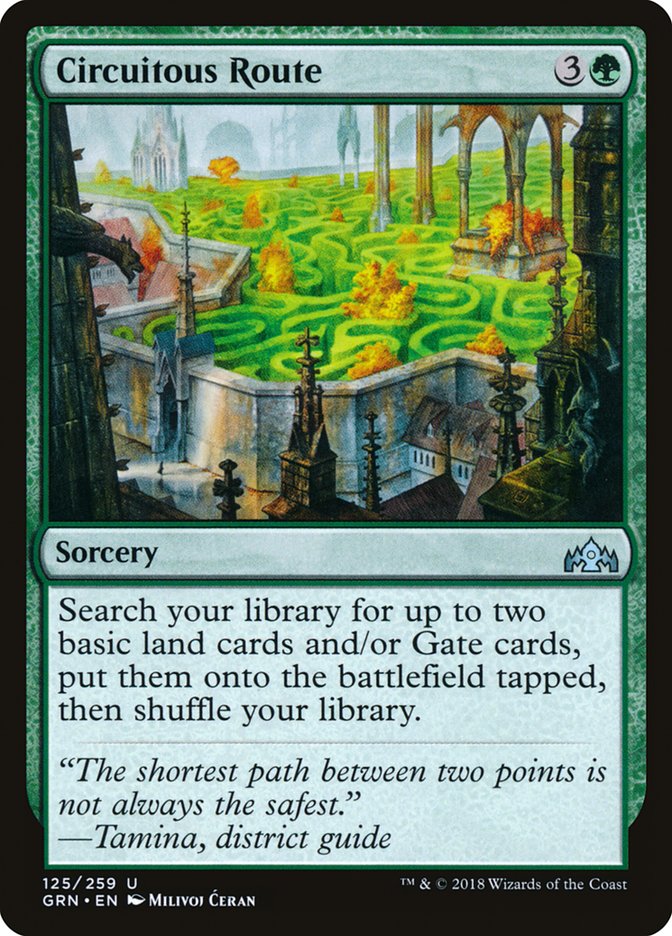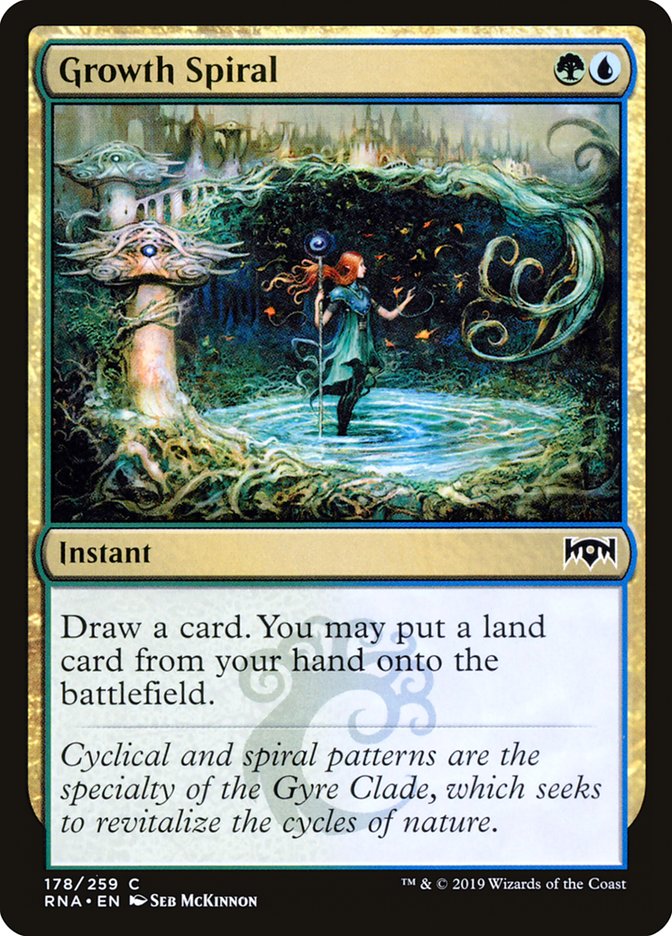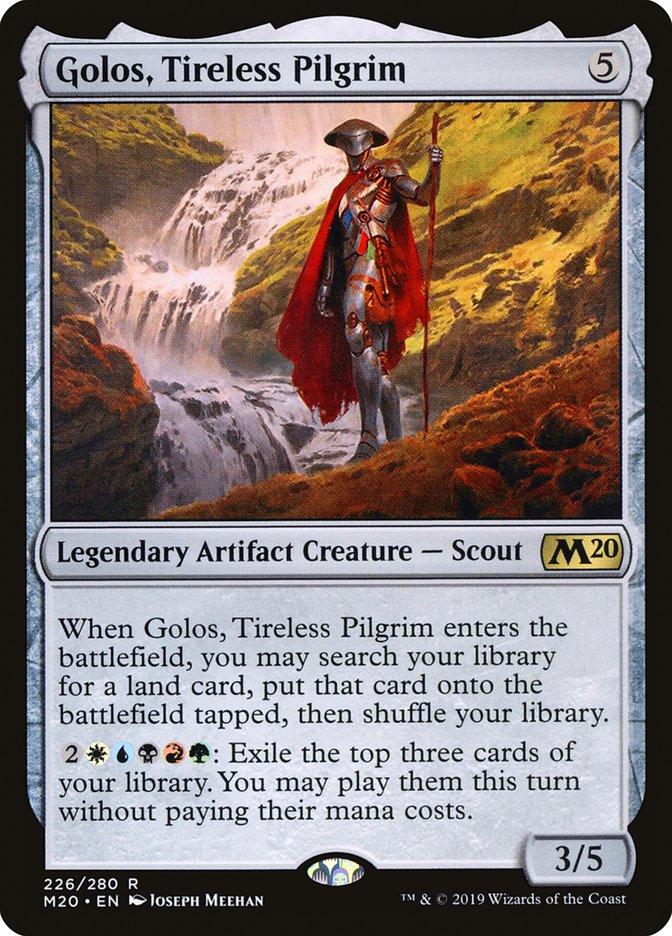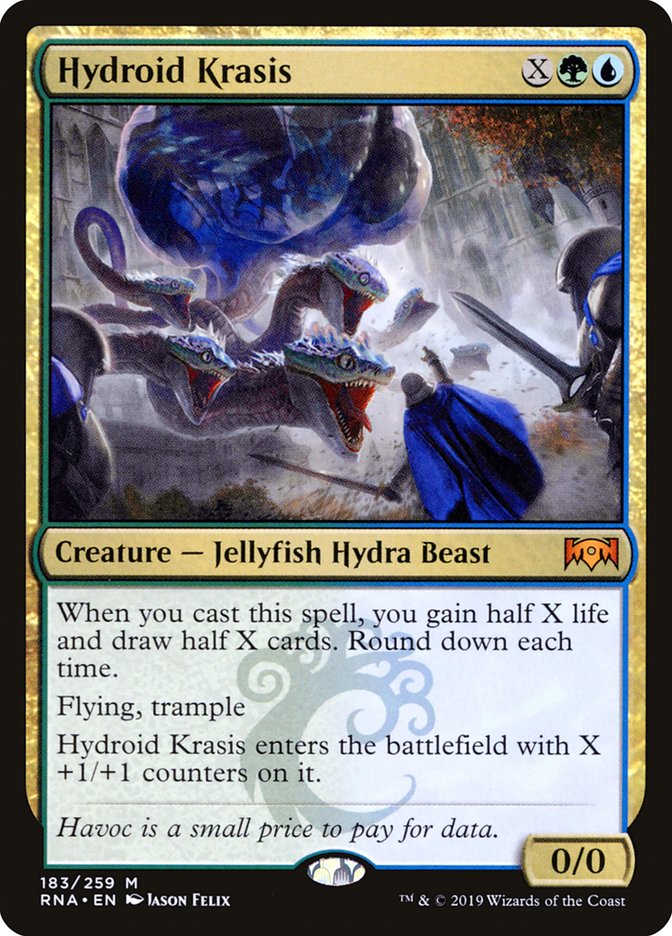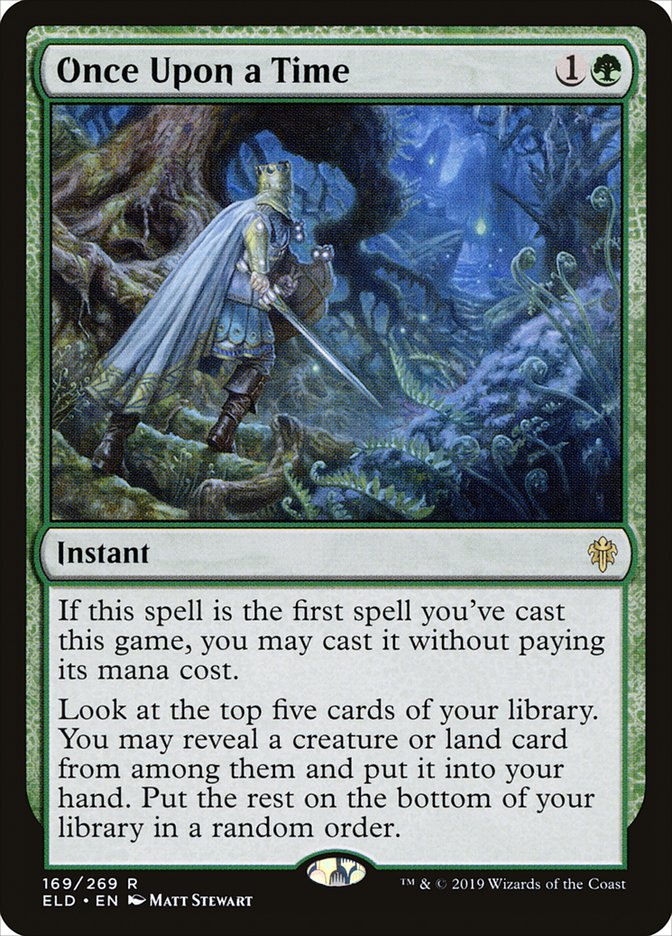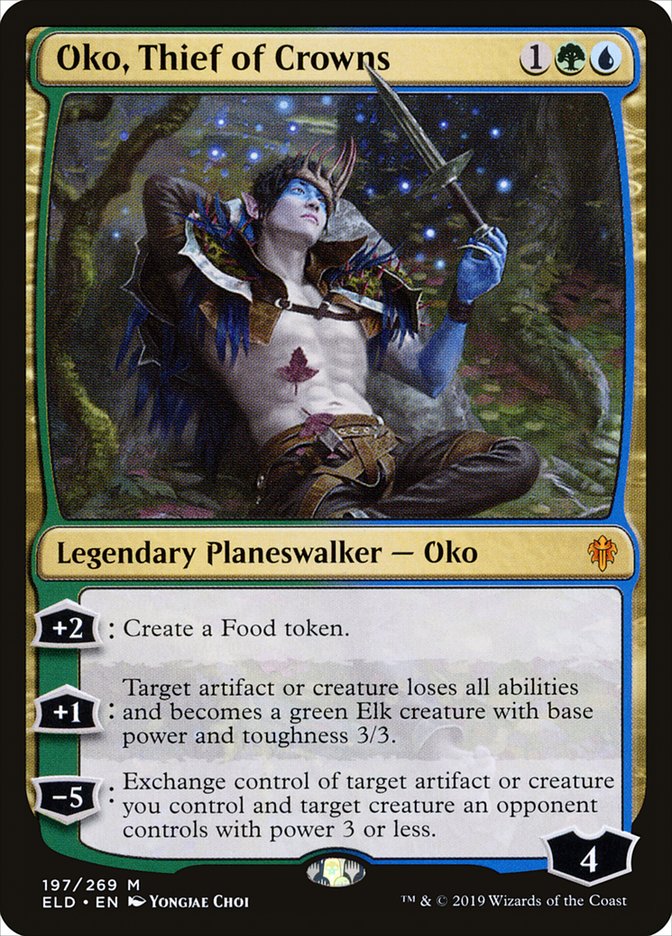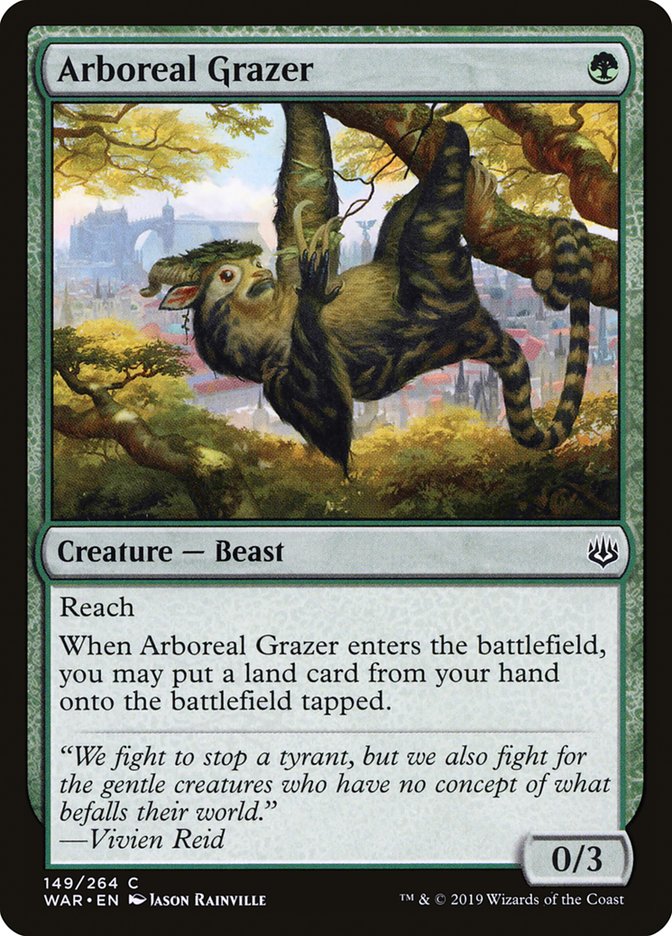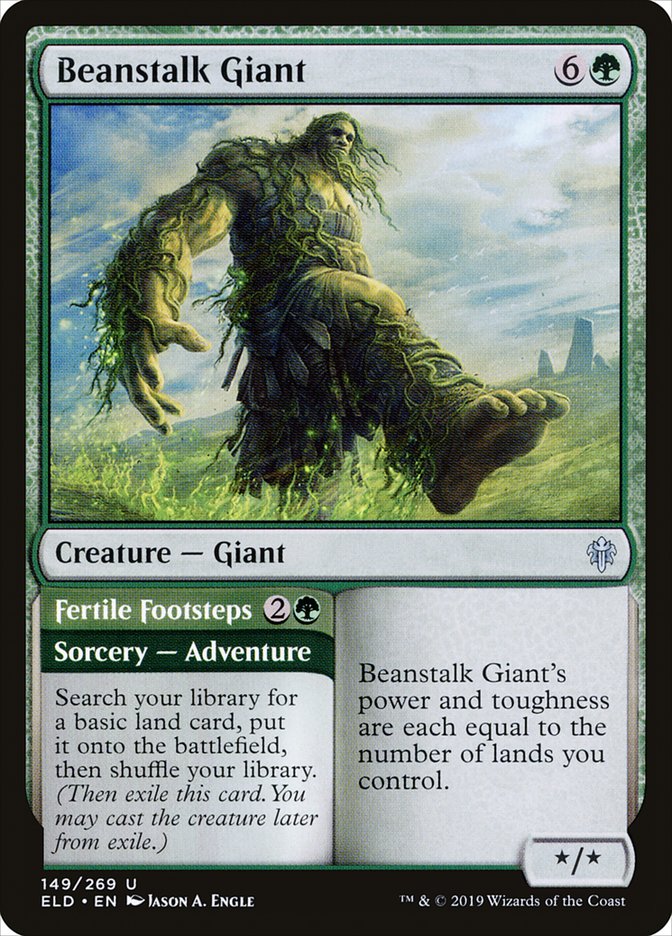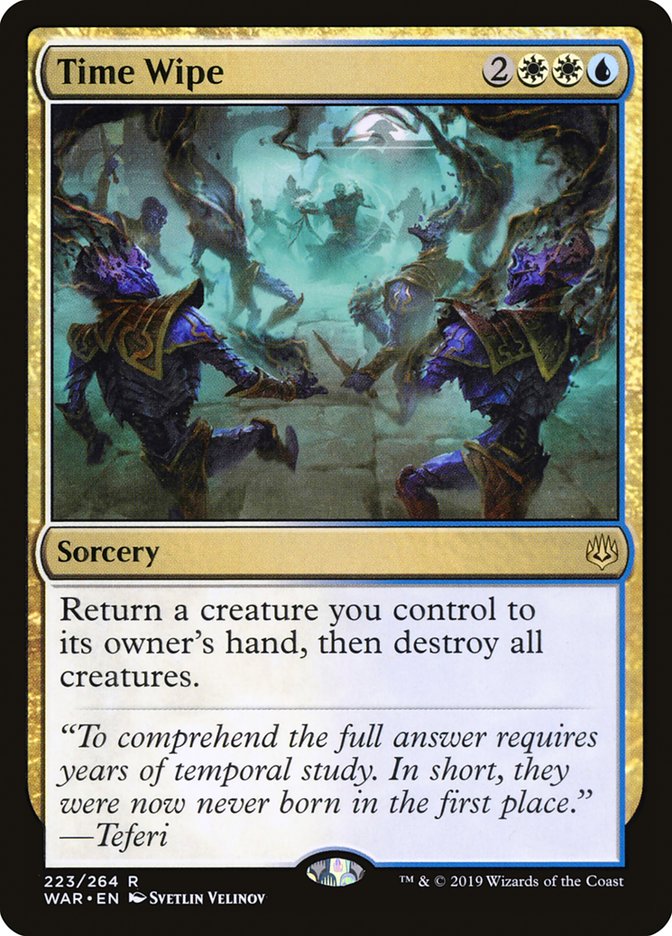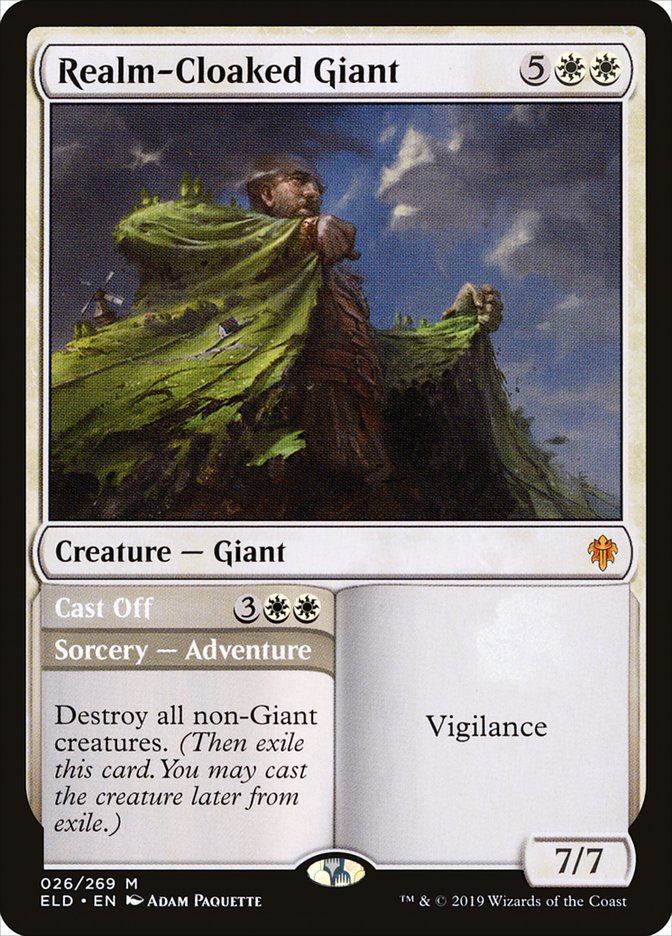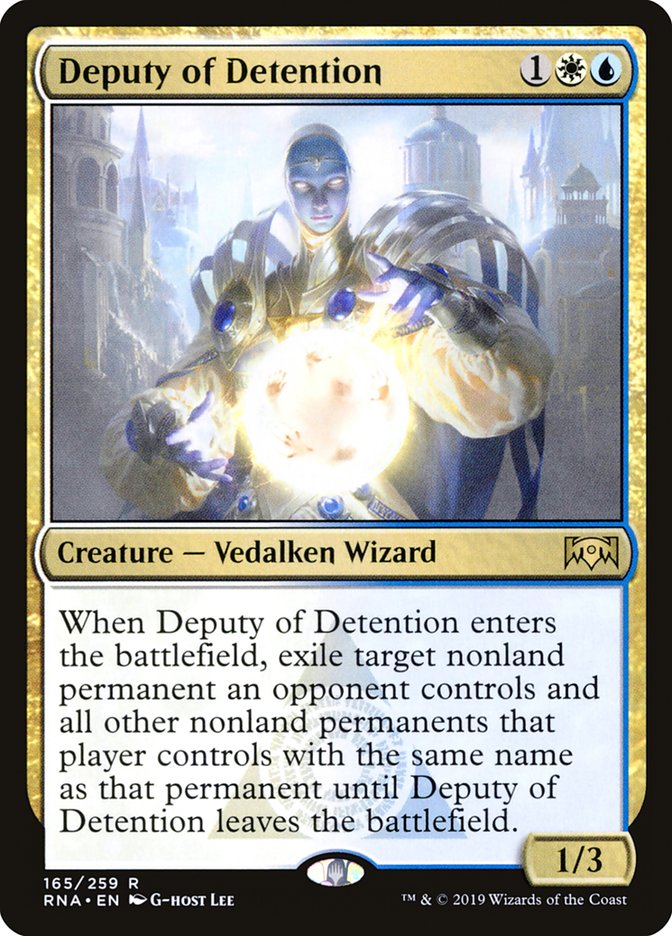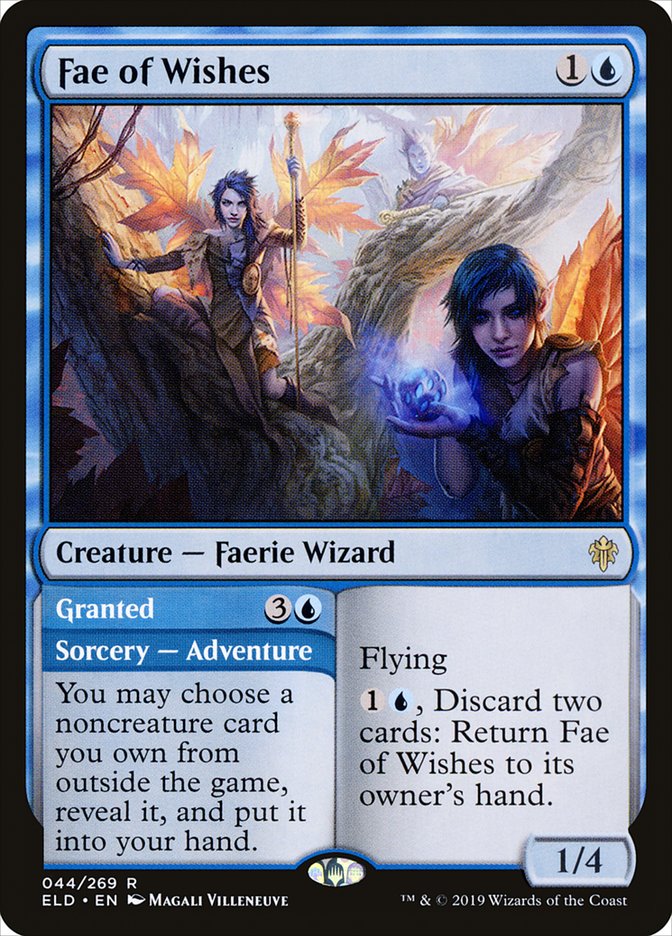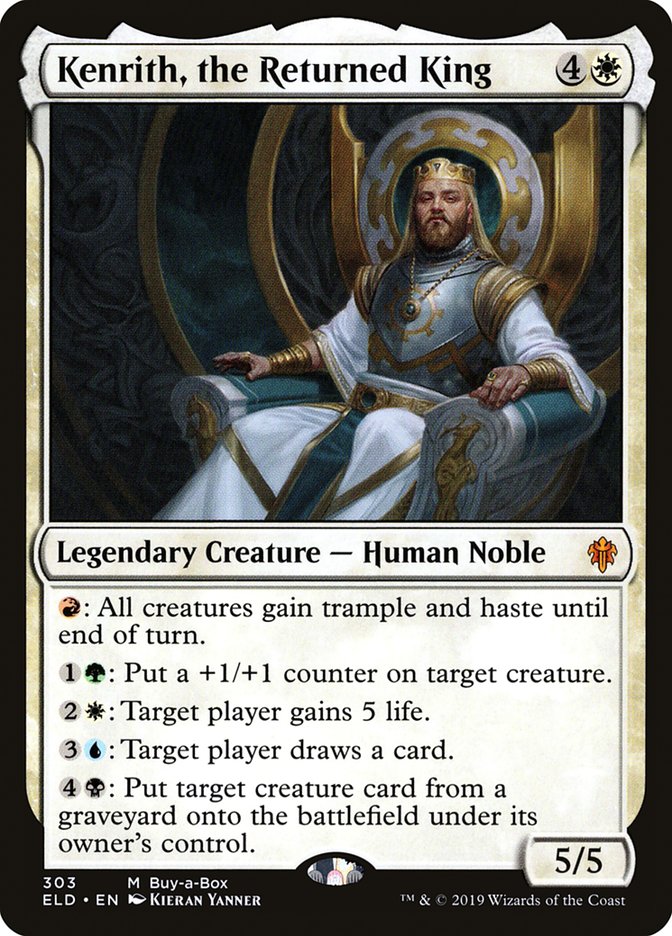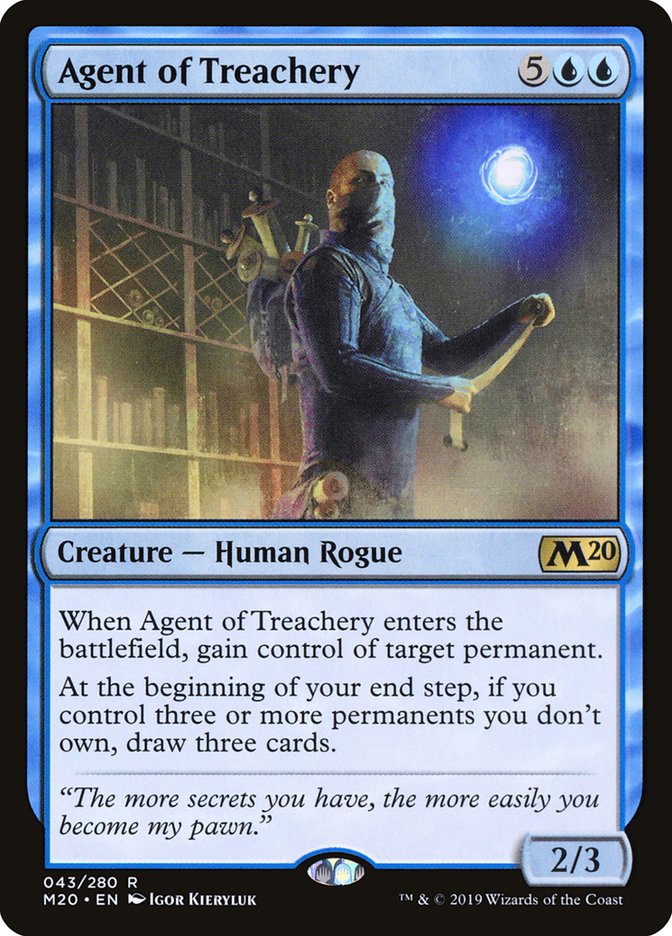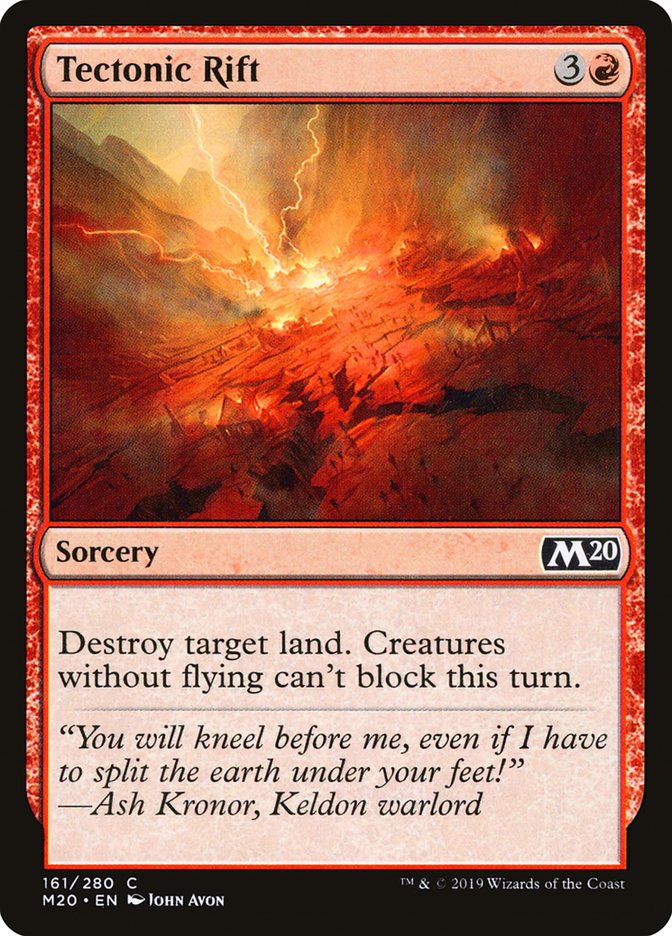Bant Golos showed up Week 1 and obliterated SCG Philadelphia. There’s no other way to say it. Comprising about half of all Day 2 Standard decks and much of the Top 8 is impressive work for any archetype in Week 1, but it’s even more impressive for an archetype that has clearly staked out one of the polar ends of the metagame.
It will be challenging to find anything that can go over the top of Bant Golos. If Bant Golos cedes metagame share, it will be because people thread a very small gap that allows them to pressure Bant Golos in the unique manner that the deck didn’t prepare that week. Given the wealth of tools available to Bant Golos, I get the sense that the deck will ultimately change to answer whatever ails it. This tells me that Bant Golos is a fine archetype to gain mastery over and commit to for the long haul.
To that end, I want to explore each nonland card that was played in a Bant Golos maindeck at SCG Philadelphia and let you know exactly how good it is. I do believe people are still making some foundational deckbuilding mistakes when it comes to the archetype. This article should help clean those up while establishing a hierarchy that will allow us to start properly sculpting our maindeck on a week-to-week basis.
The Untouchables
- Circuitous Route: 10 out of 10
- Growth Spiral: 10 out of 10
- Golos, Tireless Pilgrim: 10 out of 10
Nobody is ever cutting these cards. Next.
Touch at Your Own Peril
- Once Upon a Time: 10 out of 10
- Hydroid Krasis: 9.5 out of 10
I wish I was including Once Upon a Time and Hydroid Krasis in “The Untouchables,” but people seem to routinely convince themselves to play fewer than four copies. I am mostly at a loss for reasons why.
Once Upon a Time is disgusting in this deck at full retail price. When its free, it’s downright broken. Once Upon a Time is just everything your deck ever wants to do. On your first turns you get to keep hands without a green source, access Arboreal Grazer for immediate mana acceleration and defense, and get your tapped lands onto the battlefield before you need mana. In later turns, Once Upon a Time becomes your sweeper, your card advantage engine, your win condition, or your engine card. Playing fewer than four copies seems downright indefensible. Just because it’s a card that you routinely sideboard out, doesn’t mean you can afford to play fewer than four copies in Game 1. Games after sideboarding have a different texture and flow. In Game 1, be the best linear version of your deck. That linear version surely contains four Once Upon a Time.
When we get to Hydroid Krasis, I can at least understand why people have mistakenly talked themselves off the fourth copy. Krasis should be bad in the early-game in multiples, but in practice, you just always want to be sure you have access to Hydroid Krasis on the critical turn. It is trivially easy to overcome the disadvantage in a game where you have too many Krasis early but challenging to win games where you can’t find the card. When I’m casting Hydroid Krasis, an additional Hydroid Krasis is almost always the card I want to draw most.
I believe people viewed Kenrith, the Returned King as a stand-in for the fourth Hydroid Krasis. While both cards function as mana sinks, Kenrith’s true role is that of a trump card. Its “Draw a card” ability may be the least-used activated ability. It does not snowball the game in quite the same fashion, and exposing a singleton copy to removal in the early-game is not in your best interest. This stands in stark contrast to a Hydroid Krasis for X=2, a key bridge to the mid- and late-game.
Bottom line? Play four copies of both cards.
The Planeswalkers
- Teferi, Time Raveler: 8.5 out of 10
- Oko, Thief of Crowns: 5.0 out of 10
Oko, Thief of Crowns is a very good Magic card. Like, problematically good. Its existence invalidates many strategies. But that in and of itself does not mean every Simic deck needs to play it. Oko shines because of its ability to answer problematic permanents while simultaneously generating pressure.
There are no problematic permanents for Bant Golos. Creatures die in the deluge of sweepers, the cascading advantages of planeswalkers look quaint in the face of Field of the Dead, and the huge artifacts are just non-entities. As far as pressure, who cares? Bant Golos wins by miles, not inches.
Meanwhile, an active Teferi pushes your deck into overdrive. Just the threat of sweepers at instant speed often leave your opponents with impossible choices. Drawing cards is everything when your deck is engine-based, and you should never be ashamed to just cycle a Teferi early.
The biggest notch for Teferi’s belt is its impact on sideboarding. The best possible sideboard cards against Golos all get significantly worse in the face of Teferi. The main reason you must be conservative with cards like Veil of Summer, Mystical Dispute, and Disdainful Stroke is because you can’t afford to have half your hand go blank against Teferi. If my opponents start playing Oko, I will happily punish them to the max. Agent of Treachery and Deputy of Detention become so much worse when you don’t have Teferi in your deck. Add in the fact that Teferi provides incredible counterplay against Oko heads-up (I’ll bounce my Elk’ed Golos back to my hand…), and the choice seems very clear to me. I do think it is defensible to trim a Teferi from your list as people shift away from countermagic, but three copies are still my minimum.
The B-Team Ramp Spells
- Arboreal Grazer: 6.5 out of 10
- Beanstalk Giant: 5.0 out of 10
Once Upon a Time makes Arboreal Grazer better than it’s ever been before. While aggro decks are having a hard time finding their footing, they will eventually exist, and you’ll be happy to have Grazer on the squad when that goes down.
As far as Beanstalk Giant goes, it’s a fine card, but playing it in large numbers, especially with Fabled Passage, is just asking for trouble. I’ve run out of basics a lot, even with one or no copies of Beanstalk Giant. The manabase would have to be completely reworked to make me comfortable with playing three copies, and it doesn’t seem worth it to me at all when the creature side of the card is almost always blank in the absence of Kenrith. I like the versatility of a single copy in my lists, but don’t trick yourself into believing you’re excited about a three-mana Rampant Growth.
Removal
- Time Wipe: 6.5 out of 10
- Realm-Cloaked Giant: 6.5 out of 10
- Deputy of Detention: 6 out of 10
When I put together my first Bant Golos list, I was maxed out on Realm-Cloaked Giant due to its synergies with Once Upon a Time. Since Golos decks have begun to pick up Beanstalk Giant in large numbers, and every red deck starts with four Bonecrusher Giant, I mostly see the two sweepers as equals, with unique spots to shine.
The underappreciated and clearly underplayed card on this list is Deputy of Detention. Field of the Dead decks quickly picked up Deputy for mirrors in the last Standard format, but for some reason, adoption has been slower this time around. Deputy still mitigates Zombie armies and allows you to find spots to swing for lethal out of nowhere. Spot removal in the format is limited. Deputy of Detention has proven its worth in similar situations before. I expect it will do so once more in the coming weeks.
The Trump Cards
- Fae of Wishes: 8.0 out of 10
- Kenrith, the Returned King: 7.5 out of 10
- Agent of Treachery: 6.0 out of 10
- Collectively: 10 out of 10
It is no longer acceptable to lack a trump card for the mirror. Baseline and obvious strategies involved Agent of Treachery to gain an advantage in Field of the Dead count. This was widely adopted almost immediately following my Fandom Legends win, and any deckbuilding edge you may have gotten from including Agent of Treachery is long gone. This doesn’t mean the card is bad, just that it’s now the bare minimum.
The next plan put forth came from Brad Nelson in the form of Fae of Wishes for Jace, Wielder of Mysteries
Creatures (15)
Planeswalkers (3)
Lands (29)
- 2 Forest
- 1 Plains
- 2 Island
- 2 Temple Garden
- 2 Breeding Pool
- 2 Hallowed Fountain
- 1 Golgari Guildgate
- 1 Azorius Guildgate
- 1 Selesnya Guildgate
- 1 Simic Guildgate
- 1 Boros Guildgate
- 1 Orzhov Guildgate
- 1 Temple of Mystery
- 1 Temple of Malady
- 1 Tranquil Cove
- 1 Blossoming Sands
- 1 Plaza of Harmony
- 4 Field of the Dead
- 1 Castle Vantress
- 2 Fabled Passage
Spells (13)

When this was an unknown quantity, I have no doubt that it granted Brad a tremendous edge in mirror matches. However, at SCG Philadelphia players picked up Kenrith, the Returned King. Kenrith’s ability to grant his followers haste and trample meant that Beanstalk Giants and Zombie hordes could come down following a sweeper and end the game in a single turn. I think the plan is the default strongest presently, but that doesn’t mean I’m content to stand pat.
Creatures (15)
- 4 Hydroid Krasis
- 2 Arboreal Grazer
- 4 Golos, Tireless Pilgrim
- 1 Beanstalk Giant
- 2 Realm-Cloaked Giant
- 2 Fae of Wishes
Planeswalkers (4)
Lands (28)
Spells (13)

Instead of just matching everyone, I’m looking to go a step further by using Fae of Wishes to enable a two-pronged plan for mirror matches. First, I’m attempting to deny my opponents all access to Field of the Dead. With the combination of four spells that destroy lands, two that steal them, and a Tamiyo, this now seems like a realistic goal. The second prong of the plan is just Tectonic Rifting my way through stalled battlefields.
I cannot tell you how many times I saw battlefields full of Zombies just staring at each other at SCG Philadelphia. Rather than perfectly sculpt a scenario where Kenrith can shine, I’m just looking to end the game as soon as I have twenty power on the battlefield. As the number of sweeper effects in the maindeck continues to decrease, this plan should only get better. The Fae of Wishes plan also gains points from me for providing an additional blocker in the face of rapidly rising Gruul decks that seek to overwhelm Bant Golos’s defenses.
Fae of Wishes is just so good in Bant Golos as the game goes on. The deck is one of the few that has both the mana and resources to routinely reuse Fae and its sideboard searching shenanigans. If your sideboard is built properly, there’s no problem you can’t solve.
I think that either the Fae of Wishes-based plan or the Kenrith-based plan is a reasonable way to tackle the mirror, though if I’m leaning on Kenrith, I’d also like to bring along Deputy of Detention for the ride.
Creatures (16)
- 1 Deputy of Detention
- 4 Hydroid Krasis
- 3 Arboreal Grazer
- 4 Golos, Tireless Pilgrim
- 1 Agent of Treachery
- 1 Kenrith, the Returned King
- 2 Realm-Cloaked Giant
Planeswalkers (3)
Lands (28)
Spells (13)

You can’t go wrong with either of these lists right now, and I mostly feel that way about Field of the Dead-based strategies in general. Golos Fires, Sultai Golos, Golos Elementals… they all have merit. Start mastering Field of the Dead decks now, and that mastery will unquestionably serve you well throughout this Standard format.


